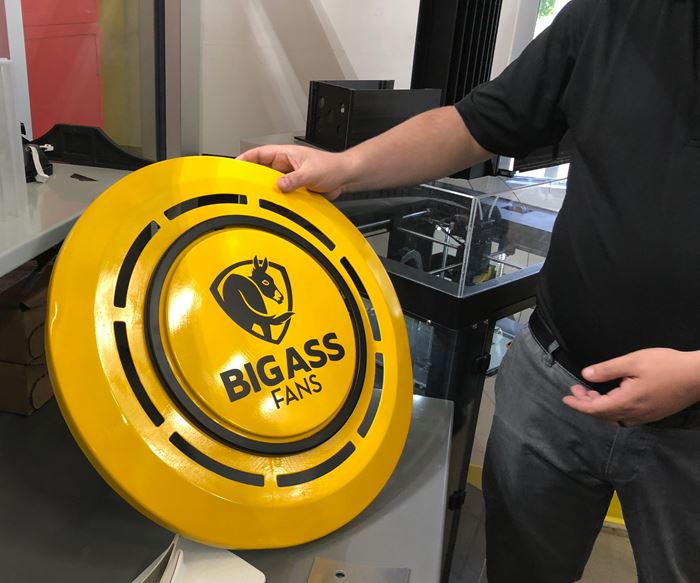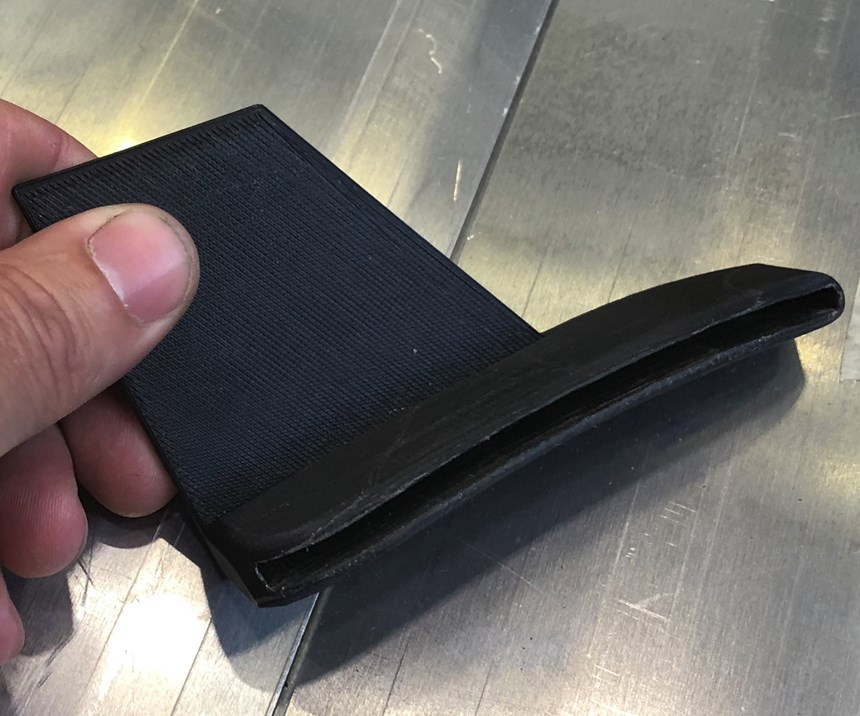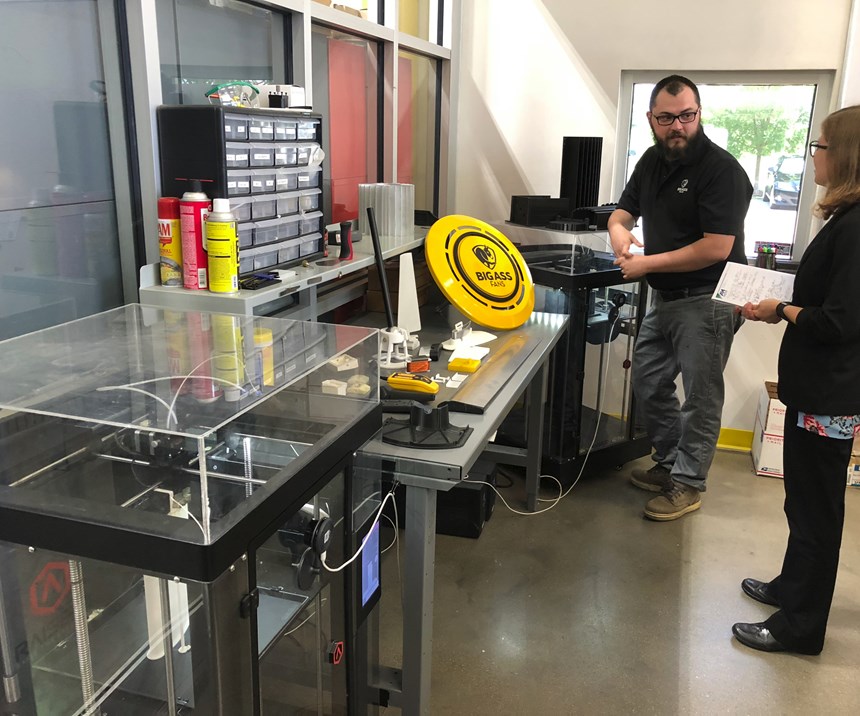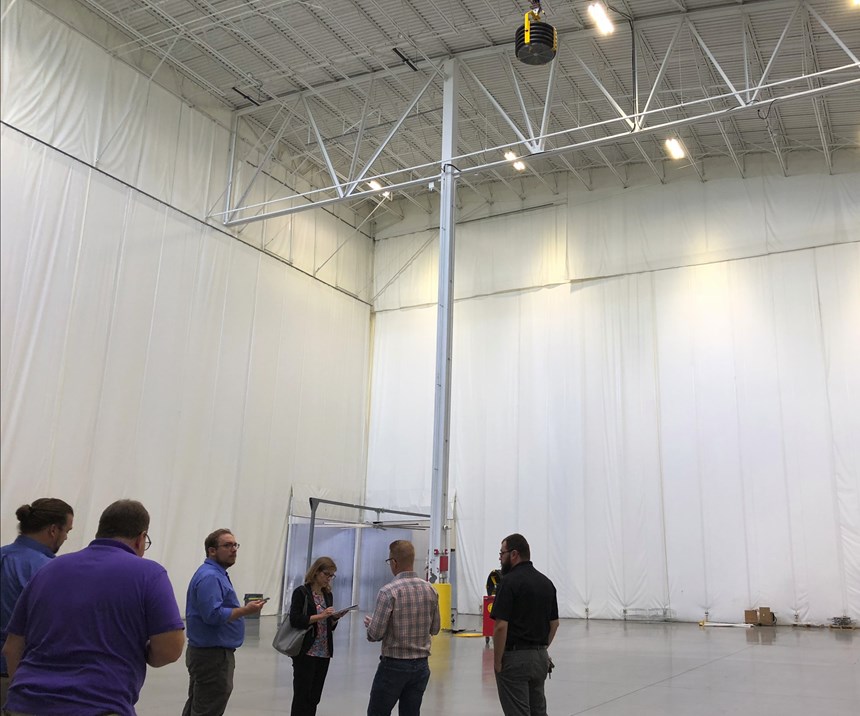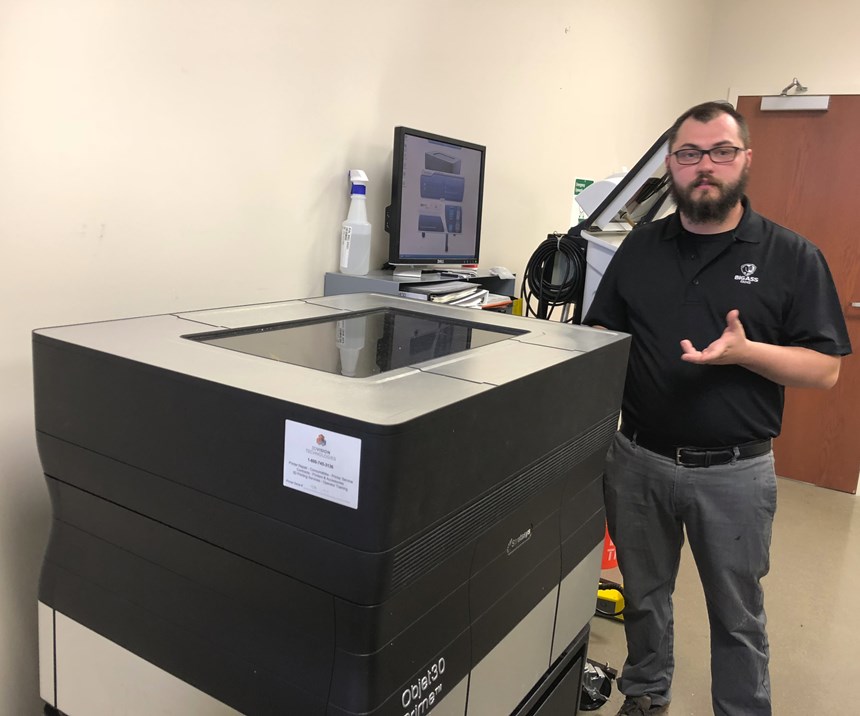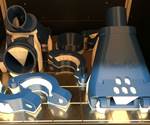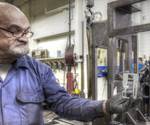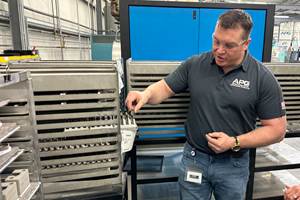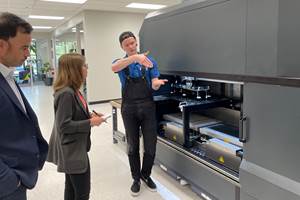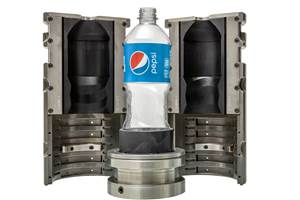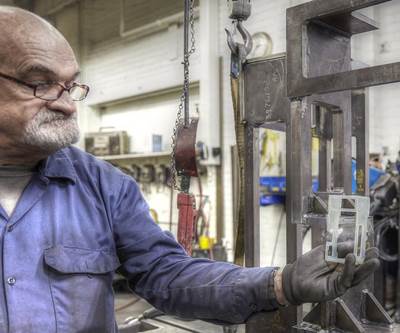3D Printed Prototypes at Big Ass Fans: Iterate and Validate
3D printing is a common tool in product development, but for this fan manufacturer, it occupies two distinct steps in the process.
We don’t tend to give much thought to the overhead fans turning above us in restaurants, airports, warehouses and machine shops, until they fail to work or become disruptive because of air movement or noise. To ensure that its fans are effective and efficient as well as quiet and safe, Big Ass Fans has invested heavily in studying their effects. The Lexington, Kentucky, company has an R&D facility devoted to the science of fans, with the capability to measure everything from cooling power to noise to electronics emissions.
The R&D work means design iterations, and lots of them. Some components of the fans are standard; for instance the aluminum extrusions that form the airfoils generally only vary in their length from model to model within a series. However, the performance of these standard components can be affected by small features. Changing the size and shape of the winglets the end of each blade, for example, can alter the air flow through the fan significantly. To design, test and prove out pieces like these, Big Ass Fans turns to 3D printing.
The company’s 3D printing capacity is held in two different locations on its Lexington campus, in the R&D facility as well as in a “tinker room” adjacent to the design department in the main headquarters. The reason to divide the capacity is not because of space constraints, but because of the two different functions that these printers serve. One set is primarily for design iteration; the other is for design validation.
First, Iterate
The R&D facility houses Big Ass Fans’ design iteration capacity: two Raise3D Pro2 Plus 3D printers. These filament-based systems are used for their spacious build volume (measuring 12 by 12 by 24 inches), speed and compatibility with a range of materials, says Michael Smith, prototype design engineer. Open parameters and support for temperatures ranging to 300°C make it possible to print with a range of filaments from Raise3D and other providers, with the ability to adjust traction, speeds and extruder temperature for best results. Smith also finds this model reliable and trustworthy, even when running unattended (though he’s also installed Nest cameras for remote monitoring, just in case something should go wrong). Each printer puts in about 2,000 hours of work per year — equivalent to the hours worked by a full-time human employee.
These printers make fixtures, assembly aids, master molds for urethane casting, and occasionally end-use parts, but their primary use is to manufacture functional prototypes for product development, such as the winglets mentioned above. Where in the past the R&D shop would have needed to machine the parts from Delrin or outsource to another supplier, it can now quickly produce its own prototypes for testing. “When I need to iterate, I print,” Smith says.
For a new product, design engineers in the headquarters building first create and simulate a design using Ansys modeling software. That part file is then kicked over to the R&D facility for prototyping, iteration and testing. It’s at this point that Smith leverages his Raise3D printers to manufacture the prototypes, often creating several different variations within a few days. For a small part like a winglet, Smith might print as many as five design iterations (each one a set of six or eight winglets) in a single build. Then, the designs are rigorously tested so that the team can gather empirical data on their performance.
Testing facilities in the R&D lab range from a large room measuring 100 by 100 by 55 feet for testing a fan’s thrust without recirculating air, to smaller chambers (including some with adjustable ceiling height) that are more representative of a fan’s final installation environment.
As test configurations move through the facility, the R&D team is gathering information about the output of each one — the thrust of the fan, speed of the breeze produced, what temperature human occupants would feel, electrical emissions and more. Often the data gathered during this testing is used to inform further design iterations that can then be printed and tested. “There’s a lot of back and forth before we get to hard-tooling anything,” says Jay Fizer, R&D manager.
Then, Validate
The data captured during R&D testing is fed back into Ansys so that engineers can tweak the design before the final prototype is 3D printed on one of the tinker room printers. The tinker room houses a Fortus 370 and Objet 30 Prime 3D printer, both from Stratasys, for this purpose. These higher-end printers are more expensive to own and operate than those in the R&D lab, but they offer the precision and aesthetics desired for the final design validation.
Where R&D is concerned with printing successive iterations, engineering’s goal is to print designs already believed to be valid, Fizer says. And because of the earlier print and iterate cycle, they often are. The company has found that testing early with 3D printed prototypes has improved designs and helps expedite time to market for new products.
Related Content
Sinter-Based Additive Manufacturing Finds a Place Alongside MIM, Press and Sinter at APG
Powder metallurgy company Alpha Precision Group (APG) is applying a particular class of metal 3D printing technology for both rapid iteration in development and flexibility in production.
Read MorePlastics Assembly Expert Joins Development and Production via 3D Printing
Manufacturing technology supplier Extol has always served customers who are producing polymer parts. Now, it is making some of those parts in-house through 3D printing, providing new options ranging from functional prototyping into bridge production and beyond.
Read MoreAdditive Manufacturing's Evolving Role at Fathom Now Emphasizing Bridge Production
Bridge production is currently the biggest opportunity for additive manufacturing, says Fathom Manufacturing co-founder Rich Stump. How this service provider leverages AM while finding balance with other production capabilities.
Read MoreHow Hybrid Tooling — Part 3D Printed, Part Metal Shell — Accelerates Product Development and Sustainability for PepsiCo
The consumer products giant used to wait weeks and spend thousands on each iteration of a prototype blow mold. Now, new blow molds are available in days and cost just a few hundred dollars.
Read MoreRead Next
3D-Printed Device Proves Rugged Enough for Dust-Free Tile Removal
Arizona Home Floors considered buying a mold to produce a plastic version of its DustRam product. But when a prototype proved durable enough to withstand working conditions, the production strategy shifted to 3D printing.
Read MoreMachine Shop Finds Opportunities with SLA 3D Printer
Adding a Form 2 desktop stereolithography 3D printer from Formlabs has enabled A&M Tool and Design to expedite workflows with 3D-printed prototypes, tooling and more.
Read More3D Printing Brings Sustainability, Accessibility to Glass Manufacturing
Australian startup Maple Glass Printing has developed a process for extruding glass into artwork, lab implements and architectural elements. Along the way, the company has also found more efficient ways of recycling this material.
Read More
.jpg;width=70;height=70;mode=crop)
